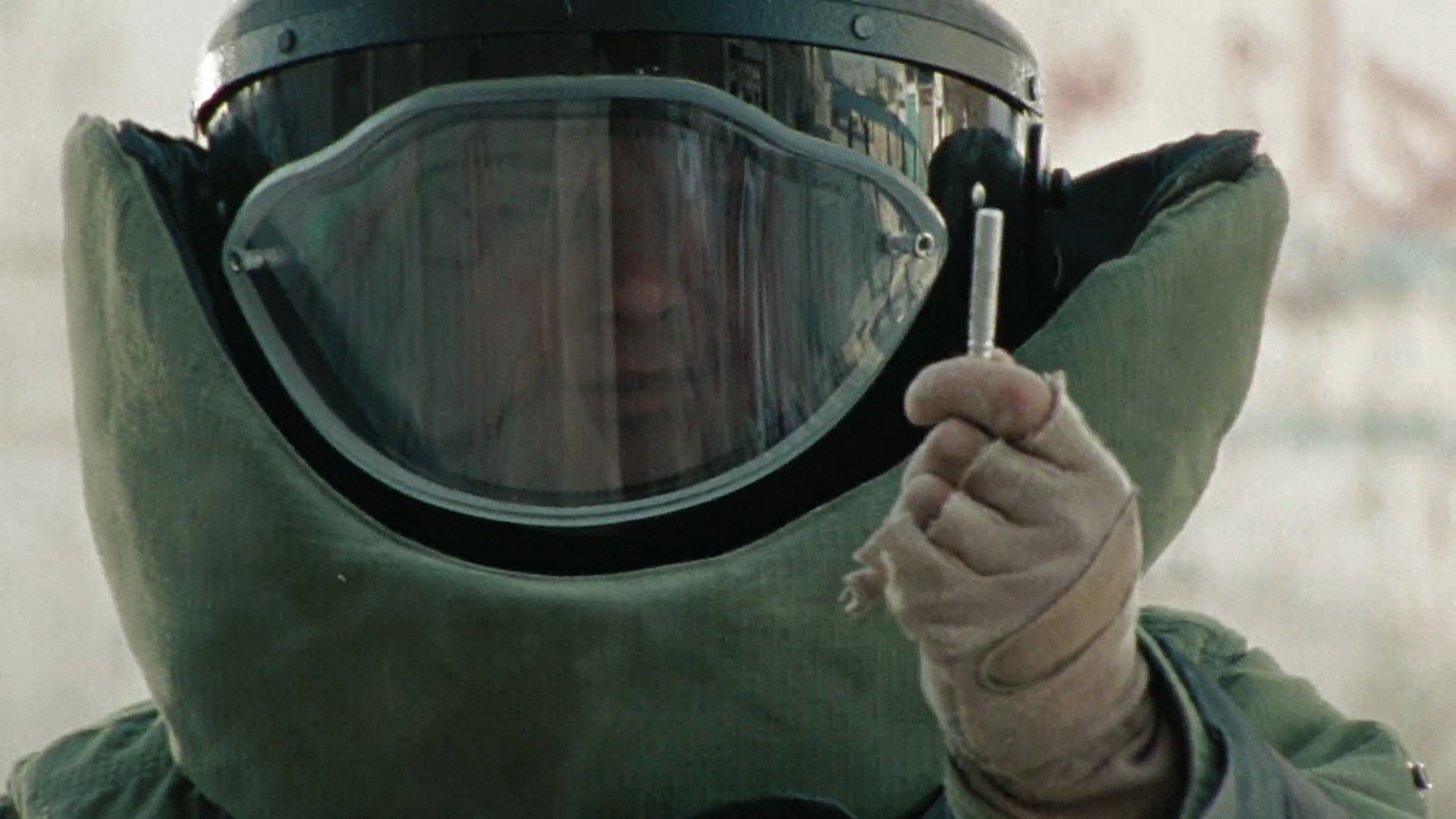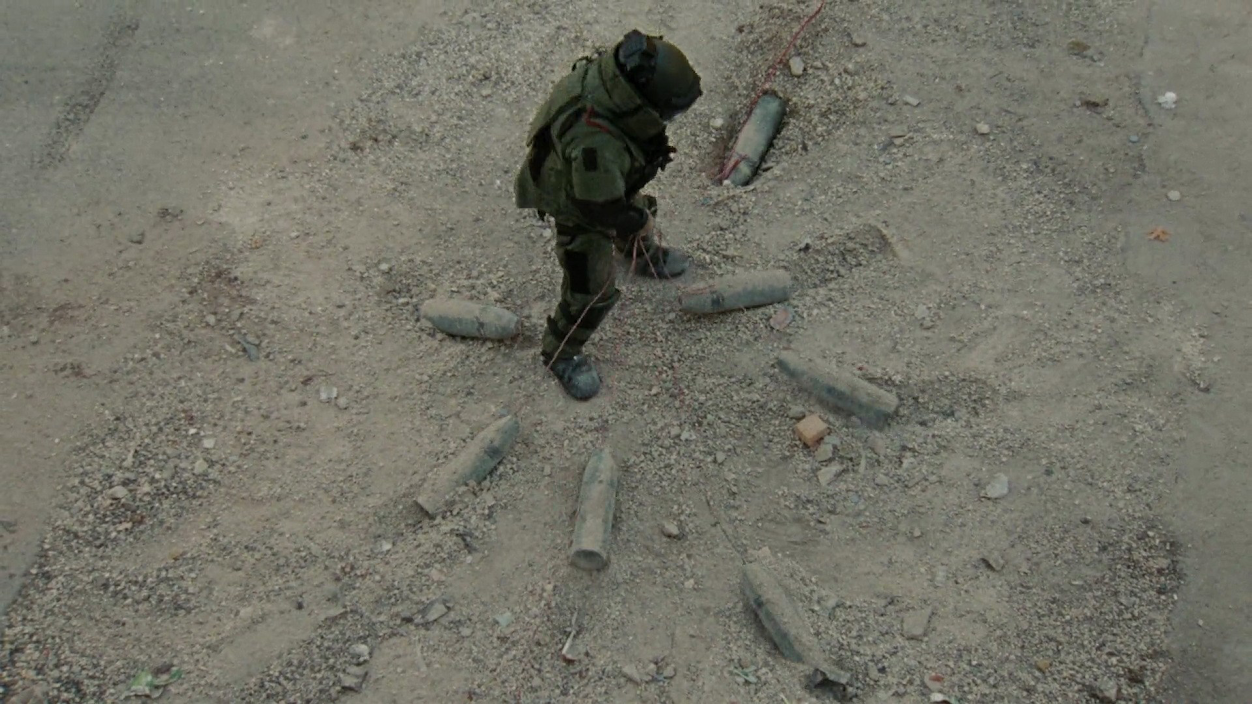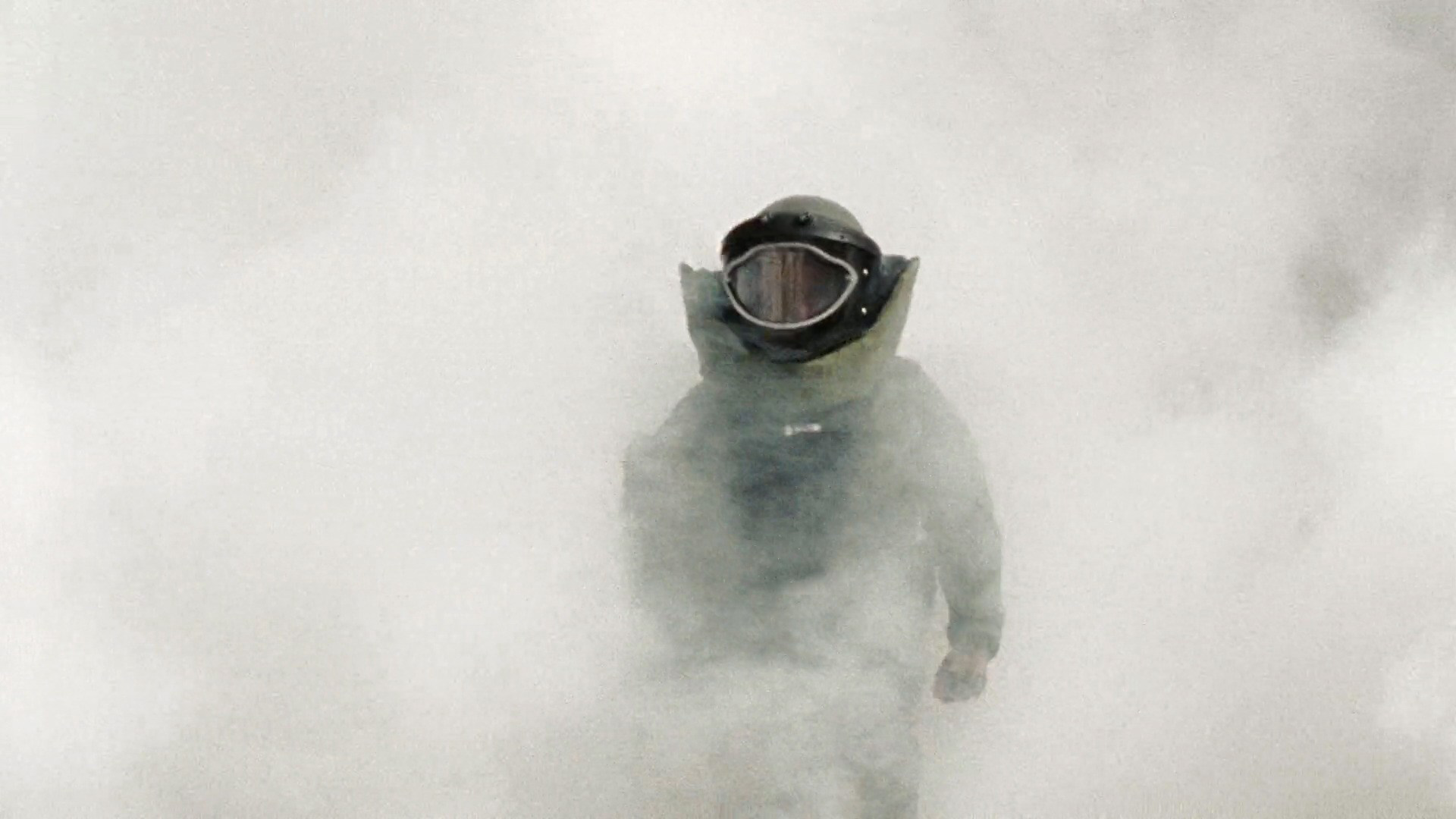Michael Cusumano here to look back on one of the few classics about the Iraq War on the 10th anniversary of its release.

Scene: The Daisy Chain Bomb
When Kathryn Bigelow’s The Hurt Locker hit theaters in the Summer of 2009 it was sold as an all-thrills, zero-politics experience. Here, the ads promised, was a film that wasn’t going to go all Valley of Elah on you with ponderous anti-war messages. The trio of soldiers that make up the film’s central bomb disposal unit never discuss politics. They defuse the bombs, they don’t get hung up on why they are there in the first place. At no point do any of them sigh during a low moment and wonder, “Man, I don’t even know what we’re doing here...”
And yet, despite the ample attention focused on the movie’s brilliantly executed suspense sequences, mass audiences failed to materialize. The film peaked at fourteen on the box office charts during its initial run, with a domestic tally stalling at roughly thirteen million, a couple million shy of its production budget. The surprise blockbuster success of American Sniper five years later would disprove the popular rationale that Hurt Locker’s underperformance was due to audiences that simply wanted nothing to do with Iraq war films, even those of the high-octane variety.
So what happened? I suspect that wary 2009 ticket-buyers were able to intuit that that Bigelow’s film wasn’t there merely to thrill them but to disturb and rattle them. That there is more to a film’s politics than scanning a film for overt political statements and, finding none, declaring the film neutral. The Hurt Locker could afford to leave so much unsaid because its imagery sent such an unavoidable message.

To that end, no visual from any film summed up that war more potently than Jeremy Renner yanking on the wire to find himself caught in a heart-stopping spider’s web of bombs. The moment has an otherworldly horror to it, as if the ground itself came alive, like a plant that reveals itself to be a Venus fly trap closing over its prey. Cinematographer Barry Ackroyd’s imagery rides a mesmerizing line between docudrama realism and the surreal. The bulky safety suit itself is a forceful visual metaphor throughout the film, making the wearer look like nothing so much as an astronaut landed in a hostile alien world.
The events of the story, based on the first-hand accounts of screenwriter Mark Boal, has the particular quality of being so strange that we sense it must be based on fact. Like the incident right before Sgt. James finds the daisy chain bomb, when a confused cabbie finds himself in an armed standoff with Sgt. James after seemingly plowing into the blast radius by mistake. in one of the film’s few explicitly political lines Sgt. James quips ,“If he wasn’t an insurgent he is now,” as he watches the cabbie get violently scooped up by the army.

As Sgt. James, Jeremy Renner star-making, complex performance has distinct shades of Tom Cruise’s cockiness to it. He manages to swagger even through the eighty pound safety-suit. Yet the bravado that was so exciting in Top Gun is never less than horrifying in this context. Renner’s “Let’s rock and roll” at the start of the scene is more ominous than rousing. Anthony Mackie’s level-headed Sanborn and Brian Geraghty’s vulnerable Elridge see risk enough without adding Sgt. James recklessness into the mix. And yet you can’t call his attitude crazy. Proceeding by the book didn’t save Guy Pearce from having all the air in his lungs exploded in a concussive blast. Sure, rock and roll. Why not?
The closest the scene comes to a satisfying Hollywood moment is when Renner makes eye-contact with the would-be bomber after defusing the daisy chain bomb (although no attempt is made to capture the man). But even as we begin to get why Sgt. James is hooked on outsmarting his opponents, we never lose sight of how futile it is in this arena. Indeed, Renner’s character starts to come unglued when ventures outside the narrow focus of his specialty, thinking he can apply his problem solving skills to the larger, more abstract injustices around him. In this way, the character of Sgt. James makes for an intriguing stand-in for the USA as a whole. Convinced of our ability to defuse anything. Running around in a haze, yanking on wires. Addicted to winning, but about to find our limitations.
